Digitalis: description, types and varieties, features of care and reproduction

The digitalis is a true decoration of any home garden. She is unpretentious in care, frost-resistant, beautiful. Everything you need to know about this plant, you will learn from our material.

Description
Digitalis, or digitalis (in Latin its name is spelled as digitalis), is called perennial herb belonging to the plantain family. Its appearance is very effective: on a straight, solid stem, from 30 centimeters to one and a half meters long, a pyramidal racemose inflorescence is formed, consisting of many flowers resembling bells in shape. Dark green leaves form a rosette at the roots. The outer side of the leaves is shiny, glossy, while the bottom they are fleecy, cast silver.
The color gamut of digitalis is extensive thanks to the many varieties bred. The petals can be colored white, yellow, pink, lilac, purple, red and even peach. There are also two-color varieties.
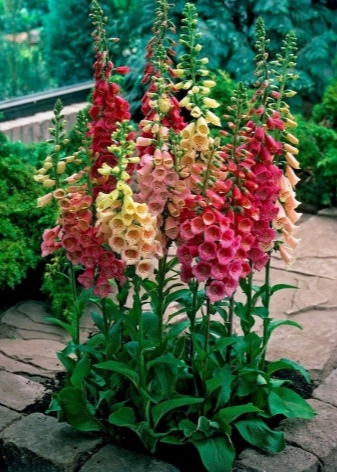
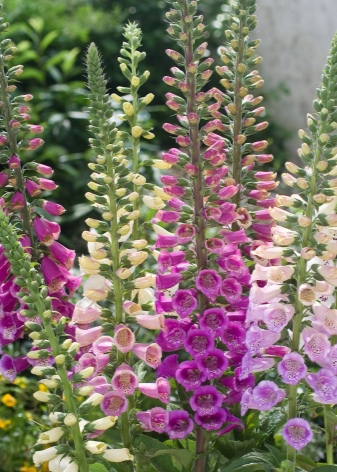
It is known that foxglove is a medicinal herb, however, its juice in large quantities is poisonous... Because of this, in the legends of Western Europe, you can find such names of it as "the fingers of the fairies", "fingers of the dead", "hats of the gnomes", "gloves of witches".
Digitalis blooms in summer. After pollination of flowers, boll-shaped testes are formed. Foxglove seeds are small, brown in color. They can be harvested by hand for subsequent seeding, or left on the plant for self-seeding with the help of the wind.
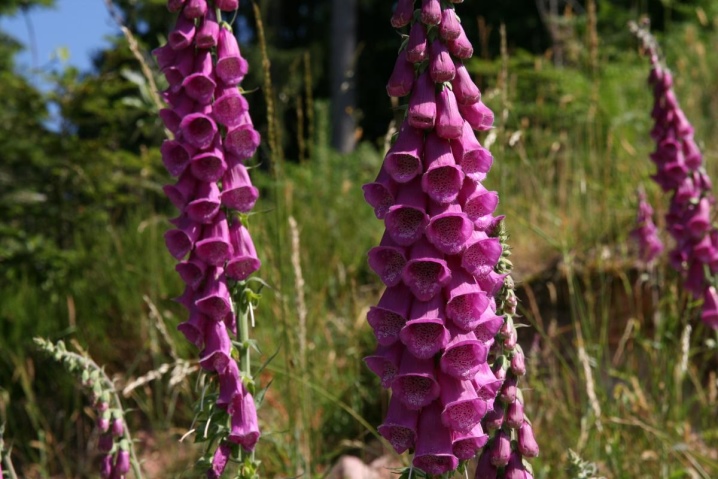
Types and varieties
Let us consider in more detail the existing varieties of digitalis.
Purple
A very beautiful and popular plant... The length of its stem reaches 150 cm. The leaves form a rosette at the roots, the largest of them are located near the ground, and the higher they "rise" along the stem, the smaller they become. They are egg-shaped, dark green on the front side and silver on the seamy side.
The inflorescence is racemose, very lush, and consists of many funnel flowers. Despite the fact that this variety is called purple, the color of its petals can be pinkish, and snow-white, and beige, and lilac.
There are dark specks inside. Flowering continues throughout the summer.
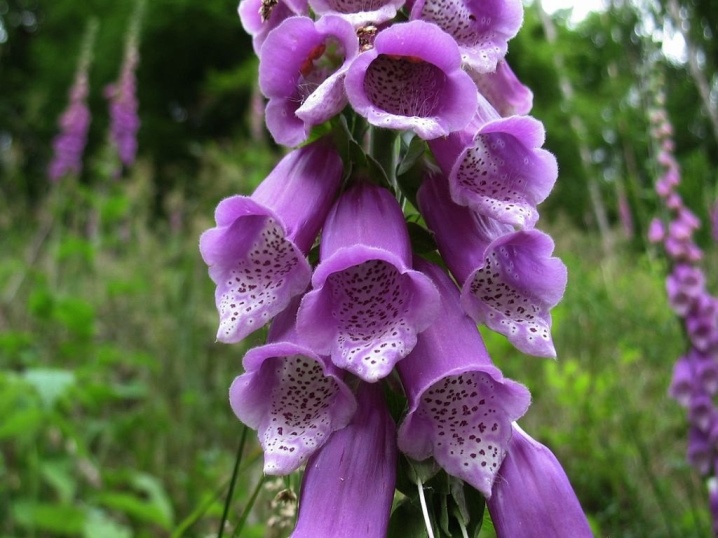
Many varieties of purple foxglove have been bred. You can familiarize yourself with them below.
- The shirley... The height of the stem is up to 150 cm, the color of the petals is snow-white, pale cream or pinkish. Bell-shaped flowers are collected in a racemose inflorescence.

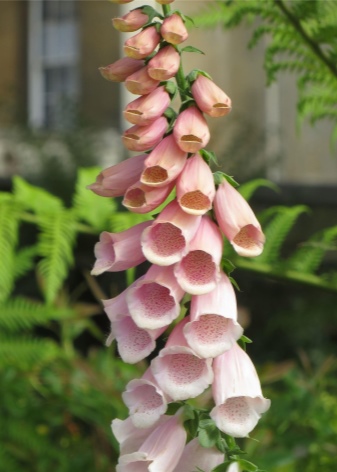
- Peloric Mixed. This variety is even higher than the previous one - 180 cm. The color varieties are the same.
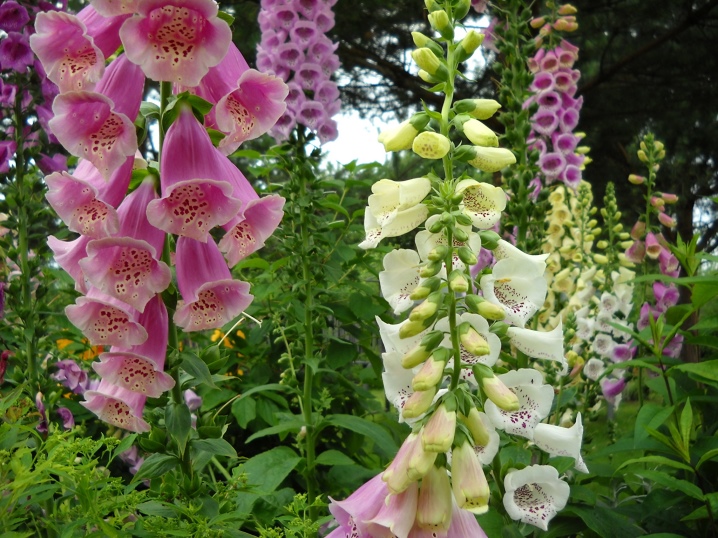
- Alba. The height of the stem is from 120 to 150 cm, the inflorescence is spicate, the flowers are snow-white, there are dark-burgundy specks inside.
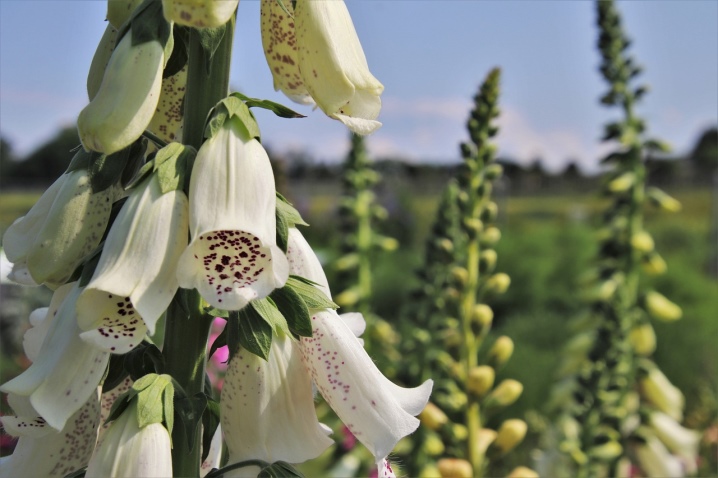
- Snow Thimble. The flowers are white, the stem length is up to 120 cm.

- Pam's choice... A stunningly beautiful variety. Outside, the bell flowers are white, and from the inside, wine-burgundy. Plant height - 100-120 cm. A subspecies of the variety - Pam's Choice Split Corolla - has a carved corolla and looks like an orchid flower.
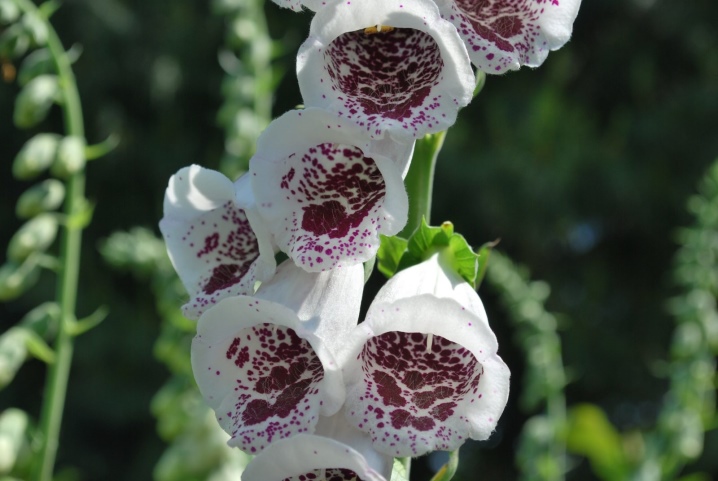
- Glittering Prizes Mixed. Plant height - about 180 cm, flowers are large, collected in a racemose inflorescence. The color of the petals is a mix of white, pink, lemon, burgundy and red.
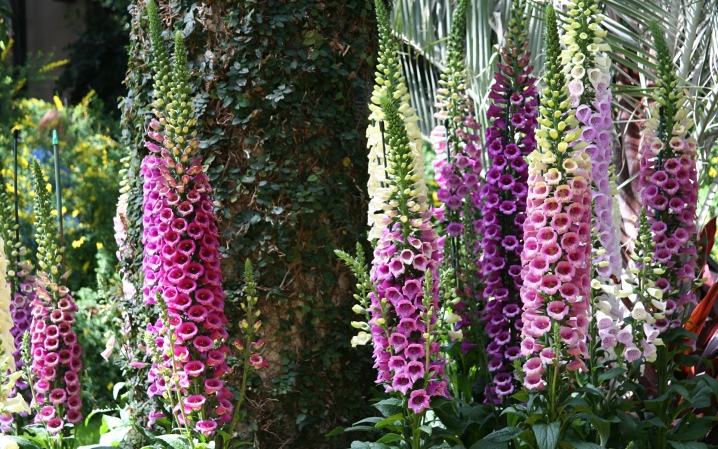
- "Pink Champagne". As the name implies, the petals are painted in a solid pink color, inside each flower there are small dark blotches. Plant height - up to 120 cm.
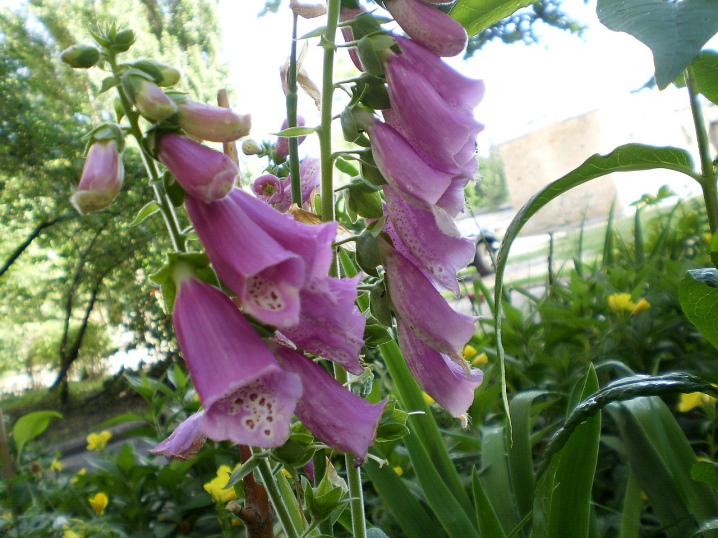
- Apricot. Differs in unusual peach color of petals. The stem height reaches 100 cm. The Apricot Delight subspecies is slightly higher - 120 cm.

- "Red dwarf". A miniature plant, the height of which does not exceed 35 cm. The flowers are rather large, bell-shaped, bright red.
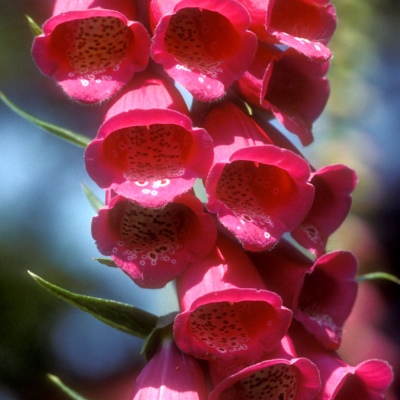
- Excelsior. The height of the stem is 150 cm. The petals are painted in lilac, pink and purple shades.
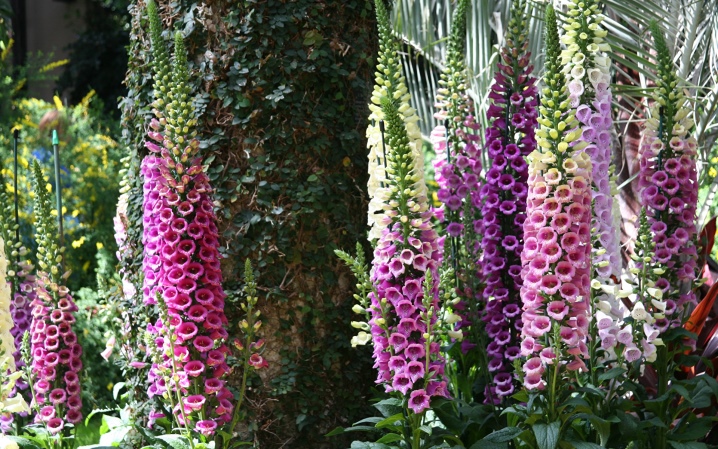
- Maria Medici. The height of the stem varies from 60 to 150 cm. The color of the flowers is cream, purple, pinkish.

- Berry Canary. Low grade - about 60-70 cm. The main color of the petals is purple, there are also snow-white, pink and red tones.
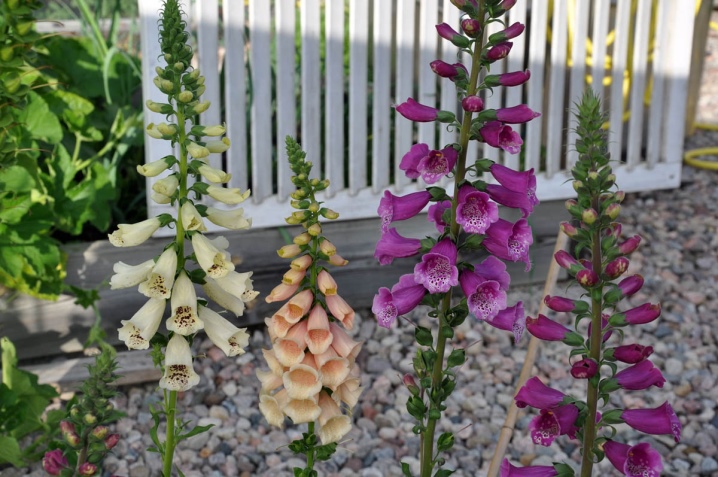
- Foxy. The height of the stem is up to 65 cm. The petals are painted white or pink with contrasting necks.
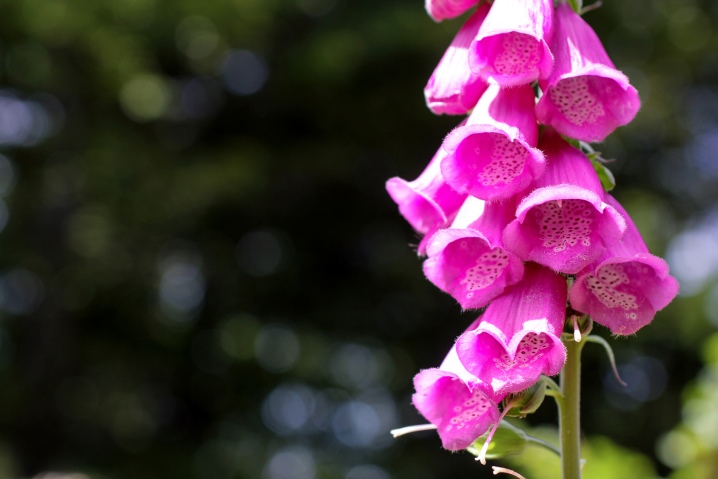
- Primrose Carousel. The height of the plant is 75 cm. The color is very interesting: pale yellow interspersed with burgundy. Lush racemose inflorescence.

- Candy Mountain. The height of the stem is 120-150 cm. The uniqueness of the variety is that its flowers are erect and not drooping. The color of the petals ranges from pale pink to purple.
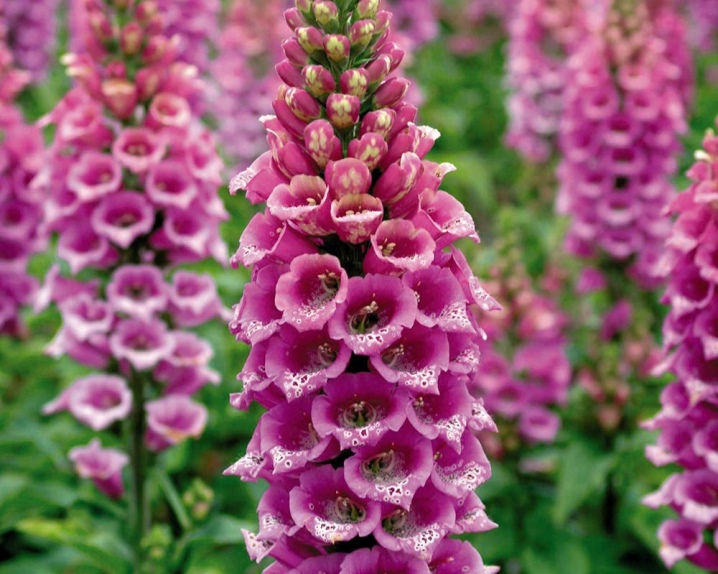
- Silver Fox... It is not only a decorative flowering plant, but also a decorative leafy plant. Its leaves are covered with fluff and have a silvery tint. The color of the petals is white-pink with a pearlescent tint. Inside, the flowers are covered with burgundy specks.

- "Carousel". Stem height - 120 cm, cream colored petals.
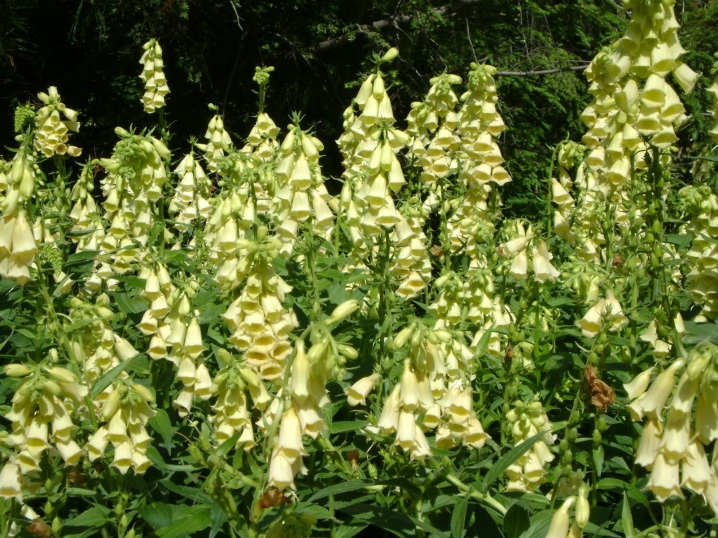
- "Apricot Beauty". The plant grows up to 140 cm in height, has a delicate peach color of the petals.
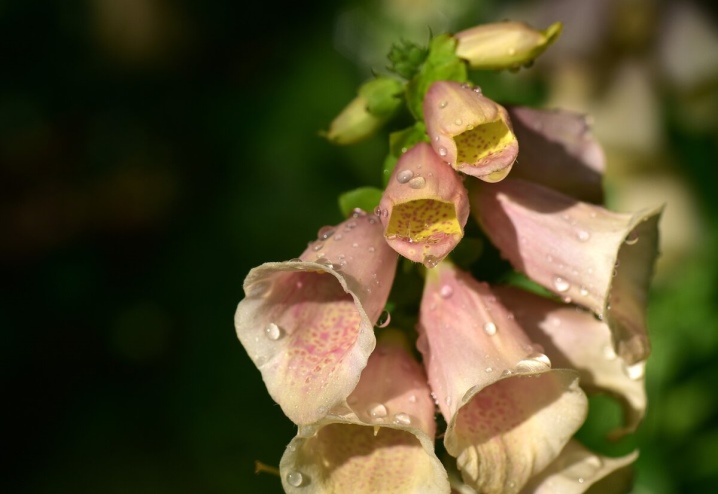
- "Dot". Plant height - 90 cm, flowers are bright crimson with wine-burgundy specks.
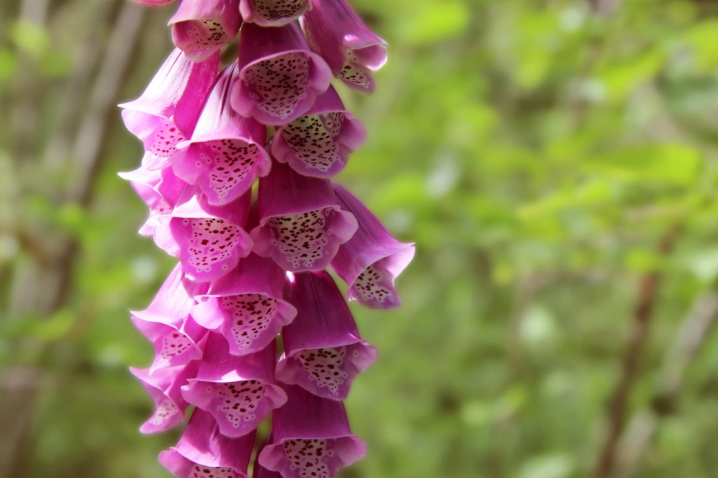
There are other varieties of purple foxglove, we have just listed the most popular.
Large-flowered
Not too tall (up to 70 cm) perennial plant. Elongated bell-shaped flowers are collected in sparse one-sided inflorescences. The color of the petals is pale yellow, there are inclusions from the inside. Its shorter variety is known - Dwarf carillonreaching 40 cm in height. The color of the petals is yellow.
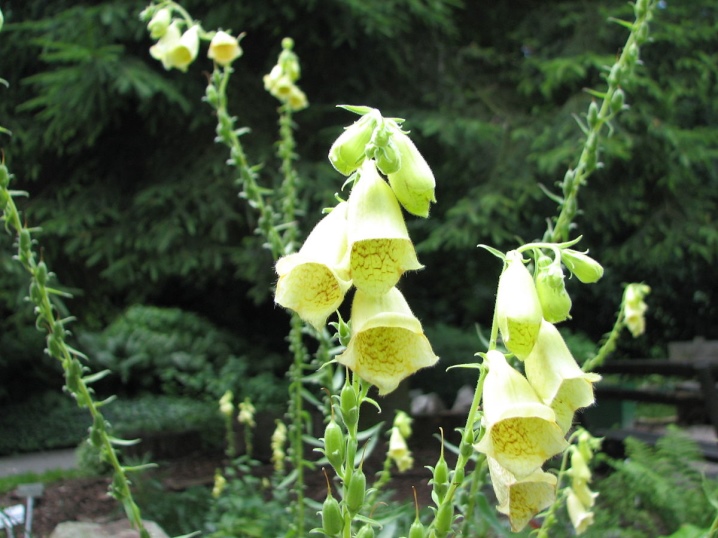
Rusty
The unusual name is justified by an even more unusual color - light brown on the outside and a little darker on the inside. Moreover, the appearance of the flower is also unusual - it resembles the muzzle of some animal with an open mouth and a protruding tongue. The color may vary slightly depending on the variety, for example:
- Gigantea - the petals are darker, resemble black tea diluted with milk, and the stem height is 150 cm;
- Gelber herold - flowers have a yellow-green undertone, the height of this variety is 130 cm.
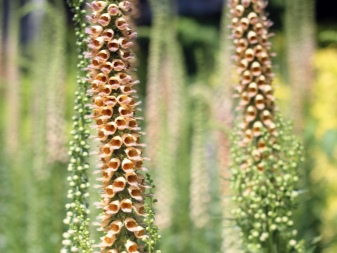

Woolly
This type of digitalis reaches a height of 30-80 cm, has slightly pointed oblong ovoid leaves. Small lanceolate leaves are also present on the stem. The inflorescence is a large densely pubescent tassel, the flowers are yellowish-brown with a white "tongue" and a spherical swollen corolla.

Ciliated
Not a very common type. The plant reaches a height of about 60 cm, several stems grow from one rhizome... Digitalis ciliate leaflets are pointed, their edges are serrated. The inflorescence is very small in comparison with other varieties, the flowers are bell-shaped, white-pink with yellow, small. The plant is considered excellent honey plant.
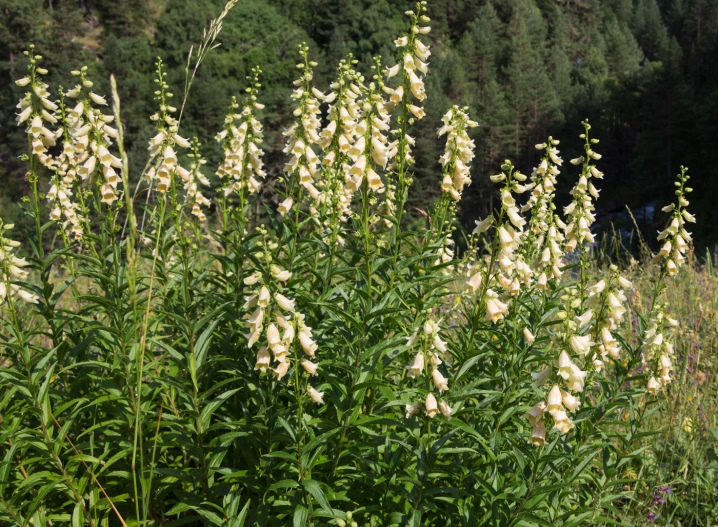
Yellow
A beautifully flowering variety of digitalis. The stem of the plant is fleshy, erect, reaches a height of 100 cm. The inflorescence is pyramidal, racemose, collected from large bell-shaped yellow flowers. The most popular variety is “Gelb Janus” 80-100 cm high. The color of its petals is pale yellow.
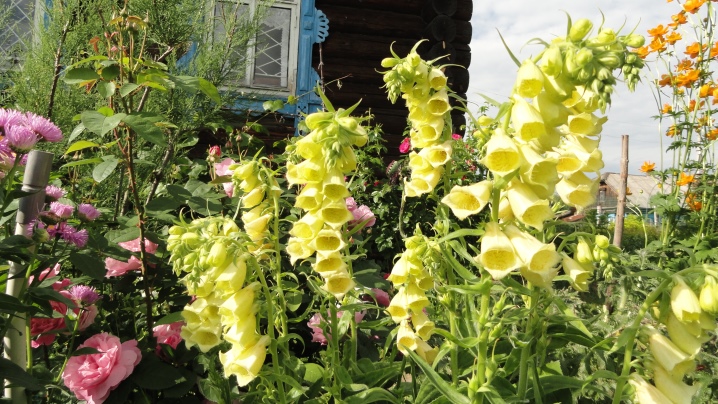
Hybrid
Breeders could not ignore such an attractive plant, so many new varieties were bred. Here are the most popular ones.
- Excelsior Hybrids Mixed is a hybrid of the purple foxglove. Its height reaches almost 200 cm, and large bell-shaped flowers (white, pink or red) are located on the stem in a spiral.
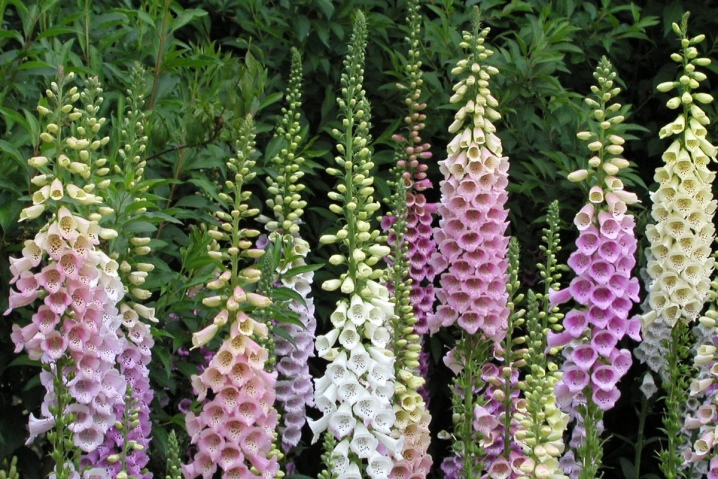
- Strawberry (Merton) foxglove. The "fruit of love" of the large-flowered and purple varieties. The color of the flowers is creamy pink, the height of the stem is up to 80 cm.
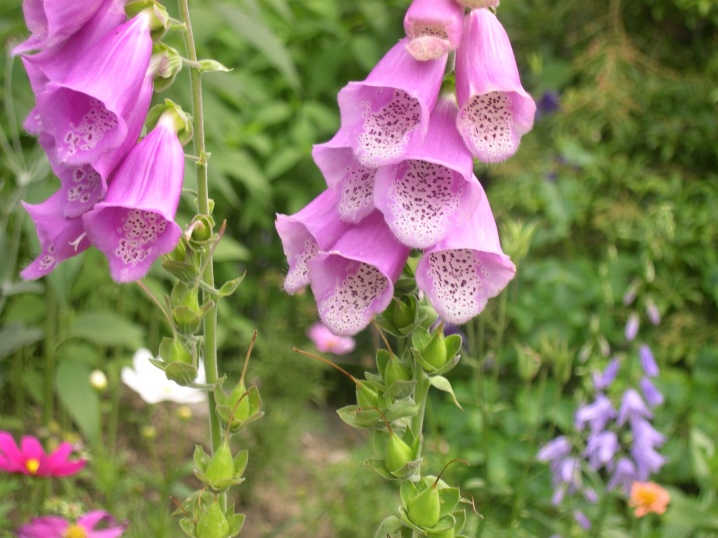
- Glory of Roundway. "The brainchild" of the yellow digitalis. The flowers of this hybrid are distinguished by a very interesting color - light yellow at the base of the "funnel", turning into pale pink to its edge. There are burgundy blotches inside. Stem height - up to 120 cm.

- Illumination Pink. It has stunningly beautiful flowers - asymmetric petals form a kind of "hood" on top, and a "tongue" stands out from the bottom in the center. The colors are unusual: from the inside - a delicate peach, from the outside - salmon-pink and the border of the same color. This hybrid reproduces exclusively in a vegetative way, it does not give seeds. The height of the plant is about 90 cm.

- Illumination Apricot. Another interesting hybrid. The color of the petals is apricot, along the edges there is an orange-red border, there are blotches of burgundy inside. The inflorescence is dense, multi-flowered, the plant is a good honey plant. The stem height is about 100 cm.
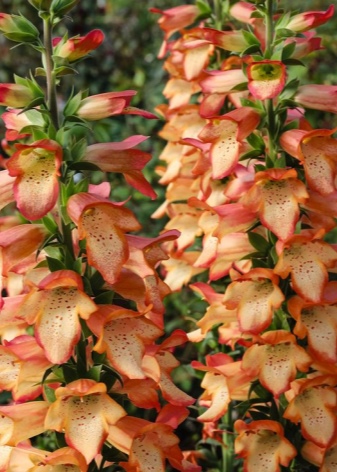
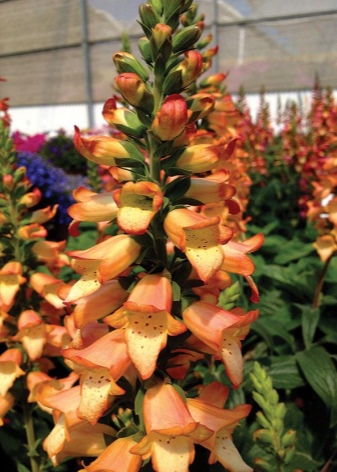
Landing rules
There are two ways to plant digitalis in open ground: pre-grow seedlings or sowing seed. Let's consider both options.
Seedling
The young animals are planted on the personal plot after the establishment of a positive average daily temperature in late May or early June. The soil is already warmed up enough by this time, and there are 5-6 leaves on the seedlings.
Preferred to grow digitalis in sunlit areas, however, slightly shaded areas will do. Planting under trees dropping foliage in the autumn is not recommended, since moisture lingers in the trunk circles for a long time, and the digitalis will suffer from waterlogging, which is fraught with a lack of flowering.
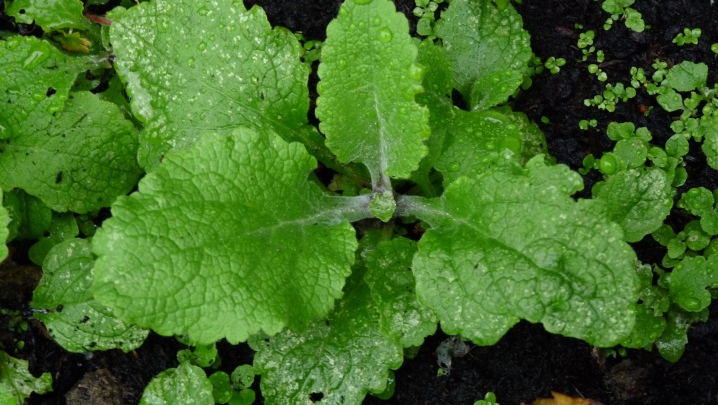
Seedling planting rules:
- select a site with fertile moisture-permeable soil;
- loosen it in advance to the depth of a shovel bayonet, while simultaneously adding 4 or 5 kilograms of compost fertilizer for each square meter;
- plant the plants, observing an interval between them of 15-20 cm with a row spacing of 25-30 cm;
- planting by transferring seedlings into prepared holes from containers along with a lump of earth;
- compact the soil, water the seedlings.
Digitalis will bloom only the next year after disembarkation.

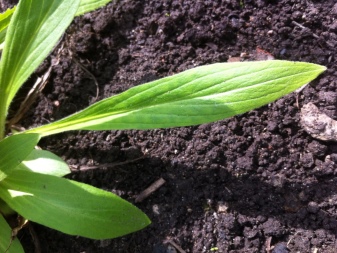
Seeds
Sowing seed in open soil is done in early spring - they will do end of March or beginning of April.
Algorithm of actions:
- prepare the bed in advance: loosen the soil, level it with a rake;
- form shallow rows with a planting depth of up to 2 cm and a distance of 25-30 cm between them;
- do not thicken the planting, keep the spacing between the seeds;
- cover the planting with soil;
- if it is cool outside, it is recommended to cover the bed with lutrasil;
- after the emergence of seedlings, thin them out, observing the distance between seedlings 8-10 cm;
- you need to transplant plants to a permanent place at intervals of 20-25 cm or 40-50, depending on what you want to get in the end: a single planting or a flower row.
You can also transplant adult bushes: the root system of digitalis is superficial, so the bushes are easily dug out together with an earthen clod and rolled into a previously dug hole. After carrying out this procedure, watering is required.
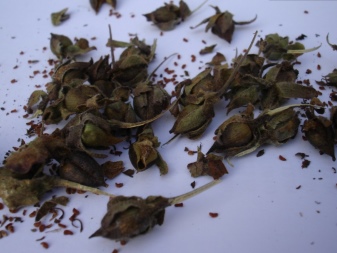
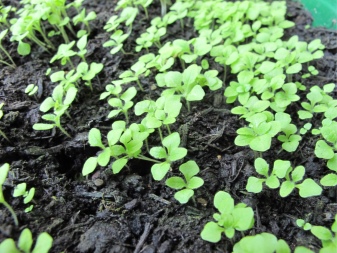
Care features
How to care for this interesting plant - read below.
Watering
The foxglove should be watered regularly, however, drainage should not be forgotten, since digitalis does not like stagnant moisture. If it rains, watering should be stopped, and slightly loosen the soil near the surface, but with care - the rhizome of the plant is located horizontally and shallowly, it can be easily injured.

Top dressing
You can already fertilize young growth of digitalis on the 6th day after disembarking to a permanent place... The first feeding should take place using ammonium nitrate. You need to dilute it like this: use a bucket of water with 10 or 15 grams of the substance dissolved in it for 1 square meter of area. For all subsequent dressings, complex mineral fertilizers are suitable; they need to be carried out 2-3 times per season. Do not neglect mulching, loosening the soil and hilling adult bushes.
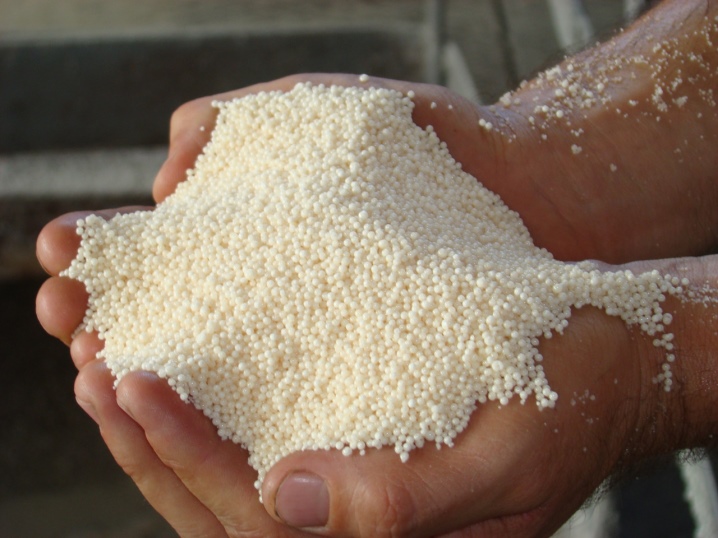
Preparing for winter
Due to the superficial location, the root system is often bare, and in the fall it is necessary to sprinkle the rhizome with fresh soil so that it does not freeze over the winter. Additionally, you can cover it with fallen leaves, twigs. The foxglove does not need more warming - it is a frost-resistant plant.
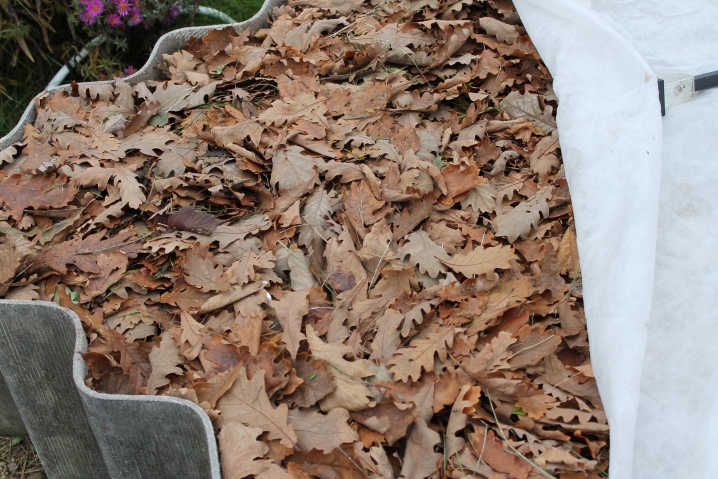
Reproduction methods
There are two ways to multiply digitalis.
Seeds
The procedure for collecting seeds is very simple: they are selected from the largest capsules as they ripen. Before planting in the ground, they can be soaked, but you can not do this.
If you decide to use seeds for growing seedlings, sow them in boxes, cover with foil. There is no need to dig deep holes - it is quite enough to sprinkle the seeds with earth a little. When shoots appear, they will need to be thinned so that the plants are strong and large.
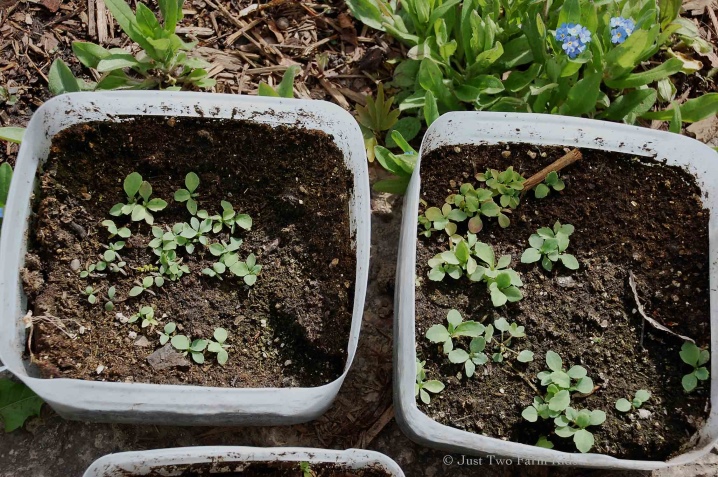
By shoots
This is how hybrid varieties breed most often. For these purposes are used basal processes. Leave the largest inflorescences for seed, cut off wilted tassels from others. After about 3 weeks, several rosettes will appear at the base of the slices. When 7 or 8 leaves grow on all, they will need to be carefully separated and planted in another place. Over the summer, the shoots will take root, survive the winter, and the next year they will begin to bloom.
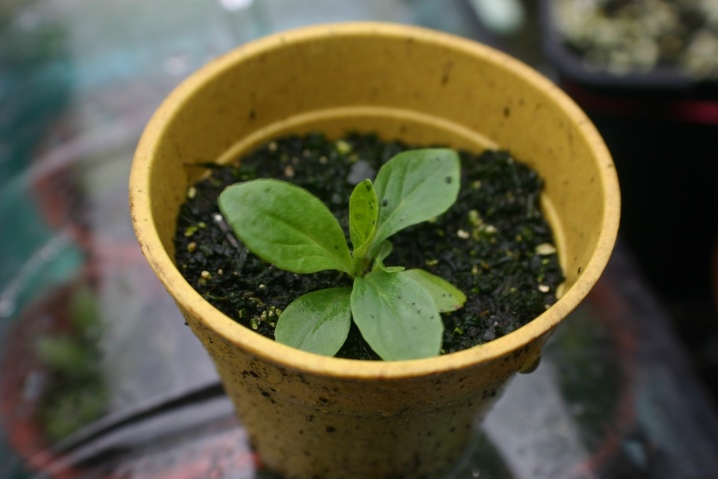
Use in landscape design
Digitalis is a magnificent decorative flowering representative of flora, therefore, it can be used to decorate any personal plot:
- high grades are used for linear flower beds, mixborders;
- medium ones are planted in flower beds;
- from miniature they create a border framing of the paths.


Particularly attractive rare varieties are planted in flowerpots and placed on a terrace in a country house or in a country house.
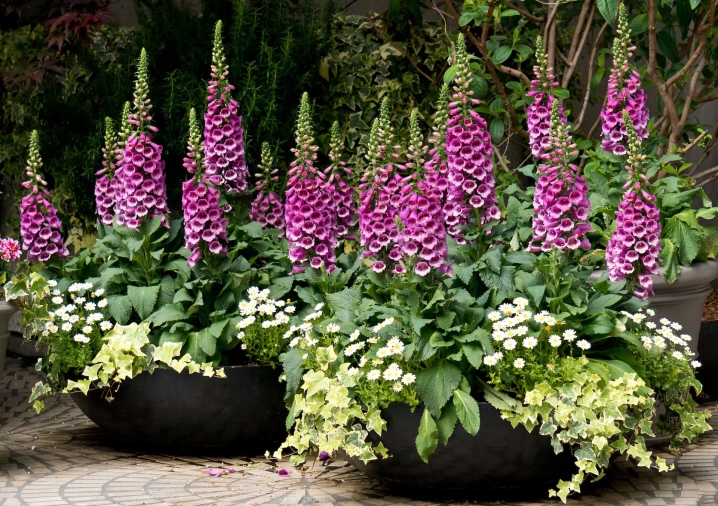
If you don't have free time to decorate your garden, don't worry - digitalis quietly reproduces by self-seeding, forming charming "wild" meadows on the site.
Digitalis is also recommended to be planted with partner plants:
- honeysuckle, rosehip, rhododendron;
- primrose, catchment, geranium, dicentra;
- peonies, iris, aquilegia, angelica.


Large paniculate peduncles are used for bouquet arrangements placed in tall flowerpots. Best suited for these purposes varieties of pink, purple, yellow and beige shades.
Digitalis can also be used as a home potted plant. For these purposes, in the spring, the flower is distilled. They begin to prepare it for this procedure in the fall, and in winter such a plant is stored in a cool room with an air temperature of + 12 ° C. If digitalis survives until spring, then by the middle of it it blooms.


Learn more about foxglove in the video below.







































































































The comment was sent successfully.